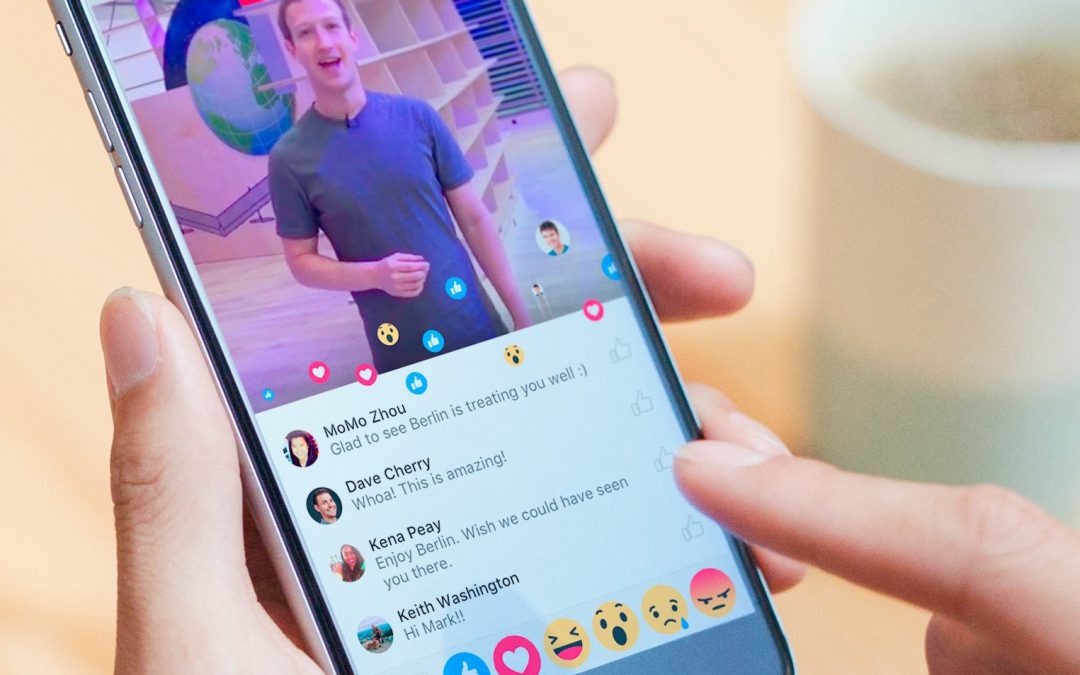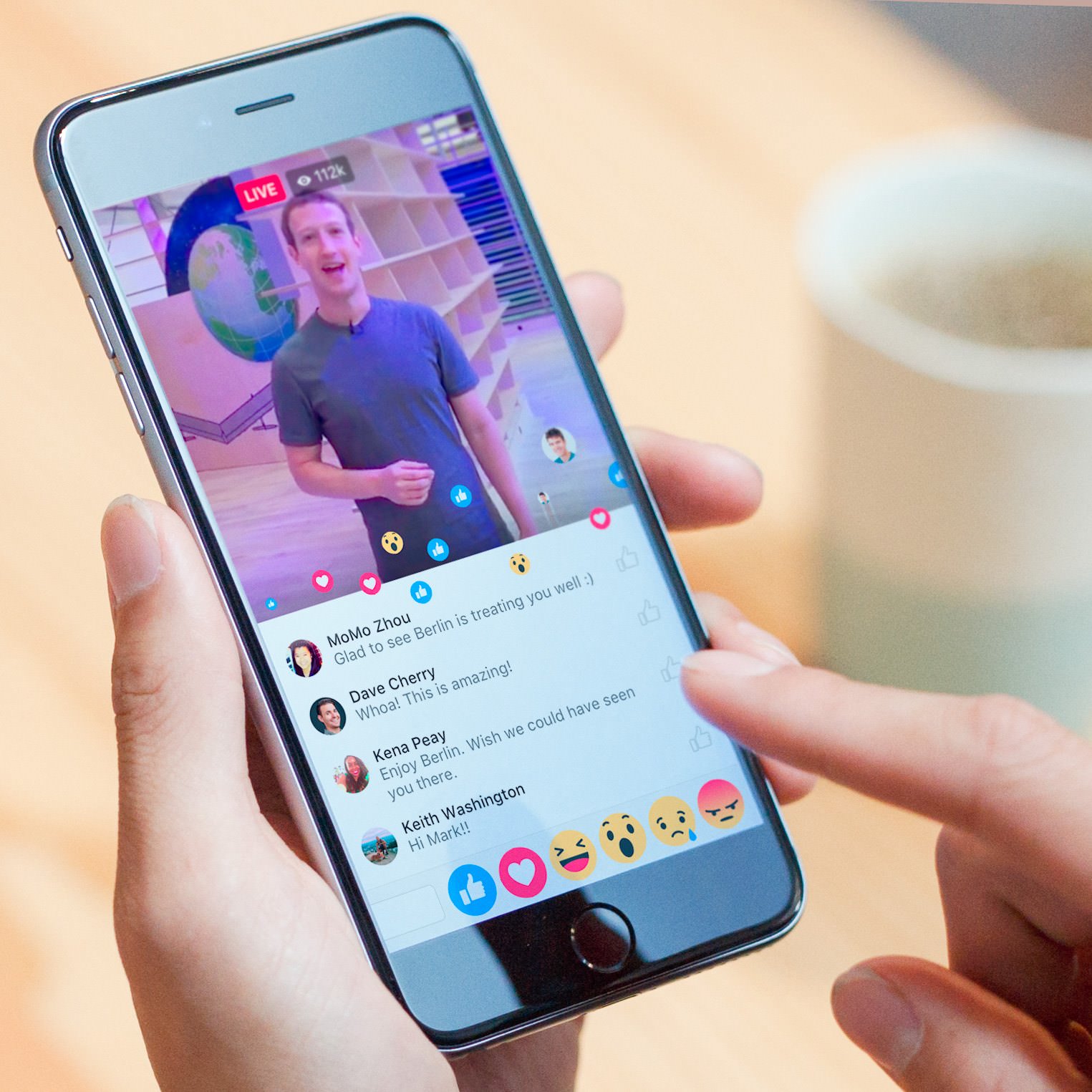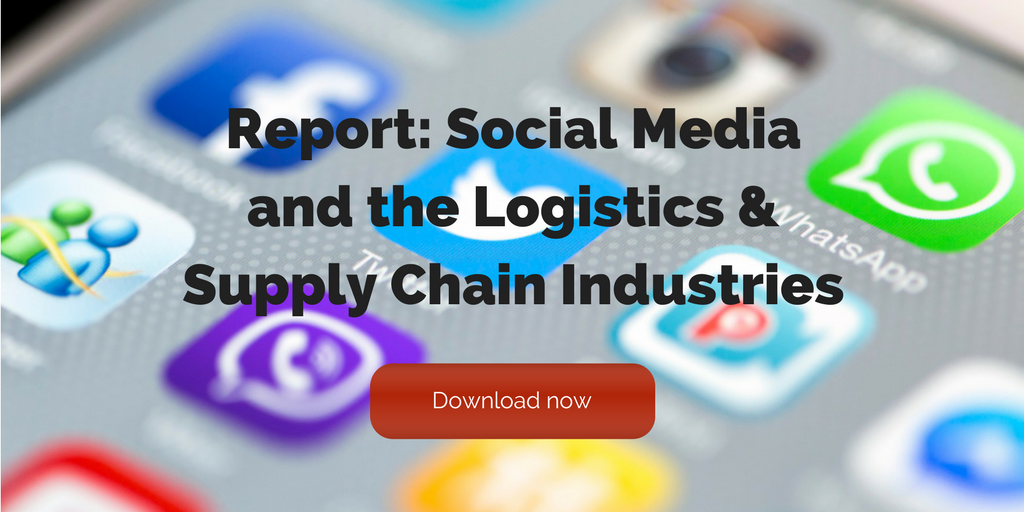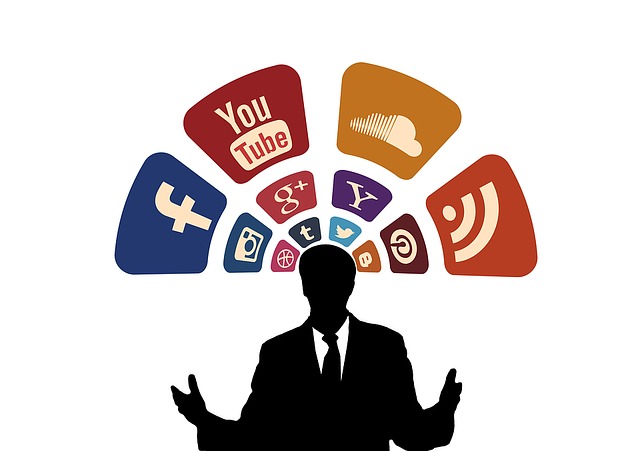
by Fronetics | May 12, 2016 | Blog, Content Marketing, Marketing, Social Media, Strategy
Facebook Live offers businesses a new, creative platform for engaging customers — here’s how to use it.
You may have noticed a sudden flurry of notifications on your Facebook account, alerting you to a new feature called Facebook Live. Facebook has slowly been rolling out Live since August 2015, making it available to all pages and profiles in December. And while it may be reminiscent of platforms like Snapchat and Periscope, which are popular social tools among America’s youngest users, this feature offers invaluable opportunities for businesses to reach customers in new and exciting ways.
Here is what B2B marketers need to know about Facebook Live.
 What is Facebook Live?
What is Facebook Live?
Facebook Live lets you broadcast in real time for up to 90 minutes at a time. People who have recently engaged (or who frequently engage) with your page will receive a notification that you are streaming live, and they can go to your page to view the video. Viewers can comment and react during the course of your broadcast, allowing you to read their remarks and respond immediately.
After the broadcast ends, the video will post on your timeline so those who missed it can watch it in full at a later time. You can edit or remove it, just like any other post, at any time.
Why is this good for business?
Video content is wildly popular. The number of videos uploaded to Facebook has increased by 94% over the last year, with more than 50% of Americans who use Facebook daily viewing at least one video per day. B2B businesses have caught on to this trend and have leveraged video quite successfully in their marketing efforts in the last year or two.
Facebook is an excellent forum for businesses to engage with customers, and Live can enhance this experience — or, at least, provide another avenue for doing so. There is something about being on air and uncensored that promotes transparency and offers the opportunity to connect with people in a very real way. Your business can showcase its brand personality, as well as its products and services, and offer high-value content to a wide audience through this channel.
Additionally, Live gets higher organic reach than non-live video, giving you a prominent spot in your followers’ feeds (without having to pay for it).
How does it work?
- Tap “What’s on your mind” at the top of your News Feed.
- Select “Live Video” from the drop-down menu.
- Add a description and choose your audience before hitting “Go Live.” You’ll see a three-second countdown before your broadcast begins.
Facebook offers these tips and best practices for using Live.
Note: Live is only available for iOS, Android, and Facebook Mentions.
Cool features
- Target a very specific audience by choosing location, language, gender or age.
- Choose where you broadcast live (other than your timeline) by posting to event pages and Facebook groups.
- A very prominent “Follow” button at the bottom of your broadcast allows your viewers to opt in to receive notifications when you go live in the future. Viewers can also invite friends to watch live videos with them.
- Edit your video after it posts to your timeline. You can select a thumbnail, select a category, include a URL, and add a call to action (such as Shop Now, Learn More, or Sign Up).
- Filters allow you to adjust the quality and color of your video, and soon a drawing tool will allow you to doodle over it.
- During your broadcast, you’ll see the number of live viewers, which friends are tuning in, and their comments in real time.
- Increase your reach by boosting the post after you’ve concluded your broadcast, or by creating a video ad from your broadcast by using the Ads Manager.
- The Live Map shows you where people are broadcasting around the world.
What kinds of content could B2B companies stream live?
Businesses have an incredible opportunity to engage with customers and partners with Facebook Live. Here are some ideas for the kinds of content your company could broadcast using this tool.
1) Behind-the-scenes glances
Show your audience your eco-friendly facilities, your impressive tradeshow set-up, your whiteboard after a strategic planning meeting, the inside of a fully packed delivery truck, a community service event, etc. There are a million creative ways to say something substantial about your business by offering a small glimpse into your day-to-day operations.
2) Q&As and Interviews
Live is an ideal platform for a Q&A-style broadcast. Invite customers to bring their questions or requests to a Live stream with one of your executives. Or, have a top-of-their-field expert offer insight on a particular topic or event.
3) Customer testimonials
Do you have any particularly happy customers who would be willing to speak about their experience working with your business? Or could someone on your team interview them? Not only is this great advertising for your company, it offers exposure for theirs as well.
4) How-tos, product demos, and sneak peeks
Build excitement for a product launch with previews, or demonstrate how to best use your product or service. Share your knowledge on best practices, tutorials, and processes related to your business.
5) Presentations, annual reports, celebrations, special events
Facebook Live offers a fresh way to present information or to share a special occasion with your online audience. Imagine announcing quarterly results this way, or honoring milestone employee anniversaries. This platform gives you a new format for marking such moments.
How does your company use Facebook Live?
Related posts:


by Fronetics | May 9, 2016 | Blog, Marketing, Social Media, Strategy

A cross-departmental social media team will improve your company’s social presence.
At a former job, I was part of a team pushing for expanding access to our company’s social media pages. The accounts were administered by a handful of marketing managers, who did not want to relinquish control. After all, weren’t we using social media for marketing purposes? Why would the content or sales teams need access? Wouldn’t that cause chaos and anarchy?
No. In fact, giving access to key people in various departments could actually help your company get more out of social media.
The truth is, social media is too integral to too many different aspects of a business to control it in a silo. The title of a recent Harvard Business Review article says it all: “Social Media Is Too Important to Be Left to the Marketing Department.”
Businesses can use social media for everything from generating leads to gaining market intelligence. And today’s customers expect a brand’s social media accounts to answer all sorts of different needs, from product inquiries to problems with their orders. If only one team is responsible for operating your pages, they need to be able to perform multiple functions, to liaise effectively between customers and internal stakeholders, or to forego some of the valuable benefits of social media.
For example, say your customer does not receive part of a shipment and posts on your Facebook feed to say as much. The marketing person managing your social media either has to 1) also be trained in customer service, 2) reach out to someone on your customer service team (or someone who can locate the shipment) and act as a go-between with the customer, 3) ask the customer to contact someone else in your company, or 4) ignore the post. Any way you slice it, it’s not efficient or a good use of anyone’s time.
That scenario is more common than you might think. Research shows that the number of customers who expect a response through social media has doubled in the last three years, and that seven of eight messages to companies go unanswered for 72 hours. Imagine if your customer service department didn’t respond to emails or pick up the phone for three days!
My former company suffered enormously from problems like these. The marketing managers administering our social accounts were spending hours each week tracking down various employees in other departments to help them problem-solve. They didn’t have time to strategize about content distribution. And even the best communicators were so overloaded with other tasks that leads were going cold before being handed to the sales teams.
If each department identified an employee responsible for overseeing social media, we could have functioned so much more efficiently and effectively. The marketing manager would be responsible for marketing messaging; the content person for generating and distributing content; the sales team for identifying leads and building relationships; and customer service for handling customer inquiries and problems.
Of course, having that many cooks in the kitchen is not without its problems. Keith Quesenberry, the author of the aforementioned HBR article, offers this advice for building a cross-functional social media team from his book Social Media Strategy, Marketing, and Advertising in the Consumer Revolution:
- Develop a social care team that can address all areas of social information efficiently and effectively. Identify policies and software systems needed for implementation.
- Organize departmental responsibilities in the social care team. Clearly define roles and responsibilities among marketing, customer service, public relations, sales, corporate communication, human resources, etc.
- Assign specific employees from each department to social media tasks. Set up social media accounts and give employees access to social media systems.
- Create brand guidelines for standards, tone, and style of social media communication. Ask legal and human resources to provide a list of do’s and don’ts for real-time consumer engagement.
- Define specific goals based on key performance indicators such as response time, sentiment analysis, engagement, views and shares, and other important metrics.
With the right planning and people in place, a cross-departmental social media team is better suited to interact with customers and business partners on these platforms, and it can help your business get the most out of its social media accounts.
Related posts:

by Fronetics | May 2, 2016 | Blog, Content Marketing, Marketing, Social Media, Strategy, Supply Chain

Image credit: startbloggingonline.com
Here are three of the top benefits of social media for businesses in the supply chain and logistics industries.
We know that the majority of businesses participate in social media — in fact, a dominant 88% of B2B marketers report using these platforms as part of their marketing programs. Large corporations, small businesses, and those in between are promoting their brand and engaging with customers online. Even companies within the logistics and supply chain industries are joining the bandwagon and reaping the benefits of social media marketing.
The truth is, if your company is not participating in social media, you are at a disadvantage. Your customers, your employees, and your competitors are taking advantage of these technologies to conduct business in new, more efficient ways.
Why are so many companies using these tools?
Here are just three of the top benefits of social media for business:
1) Communicate and engage
By participating in social media, your business has at its fingertips a highly efficient, sophisticated platform for engaging customers, employees, potential hires, industry peers, and the general public. You can announce a new product launch; share small or sweeping changes in service, supplies, practices, locations, etc.; respond to questions or complaints; weigh in on industry discussions happening on online forums; and celebrate employee milestones and accomplishments.
2) Generate and nurture leads
Social prospecting is the process of using social technologies to identify and pursue potential customers that may be interested in your company but that don’t yet know about it. Your business can prospect from the 2.3 billion worldwide social media users, engage them with relevant content, and form and build relationships that you otherwise would have never encountered were it not for the World Wide Web.
3) Reduce marketing expenses
It’s free to set up social media accounts for your business. The real cost comes with dedicating resources to maintain and monitor the content on each channel, and those needs will vary from business to business. Even if you do chose to upgrade and pay for premium benefits and services, like ads, the cost is significantly lower than using many traditional mediums. One recent study suggests that the cost per thousand impressions (CPM) could be as low as $2.50, while traditional tactics, like direct mail ($57 CPM) and TV ads ($28 CPM), remain significantly higher.
Learn more about social media for business in Fronetics’ new white paper, Social Media and the Logistics and Supply Chain Industries. The paper defines social media and social technologies, identifies users and usage patterns, and describes more benefits companies within the logistics and supply chain industries can realize through participation.

Related posts:

by Fronetics | Apr 28, 2016 | Blog, Marketing, Social Media, Strategy

In today’s digital world, it is amazing that many businesses, particularly those in the supply chain and logistic industries, are still questioning whether they should be on social media. The simple answer is yes — social media channels are the ideal place to brand, market, and grow your business.
Here are five reasons why your company should be on social media.
1. Lead generation.
Sales teams can also use social media as a lead-generation tool. Social media takes the old marketing billboard and makes it a conversation, which is a huge benefit to businesses who use it well.
2. Trust and thought leadership.
Though the results are not instant, the amount of time and marketing dollars you spend on social media pays off. How long will it take? That varies depending on your business and your sales cycle. But by distributing quality content and engaging customers through these channels, you eventually will establish your company as a knowledgeable, thought-leader in your industry. This creates a level of trust with potential customers, which is invaluable to securing the sale down the road.
3. Brand awareness.
Social media not only builds your brand but can expand your content’s reach. Those who follow you and enjoy your content will “like” and share it, meaning their followers will see it, thus expanding your audience. This makes your reach virtually limitless, providing that your content is compelling, engaging, and worthy of sharing.
4. Business intelligence.
Being on social media keeps you on top of the latest trends; it is a valuable business tool. You not only engage potential customers, but you can learn what they are looking for, what your competition is doing. It can also provide data that serves as a strategic compass to generate ideas and guide the direction of your business in the future.
5. Talent acquisition.
You can find new talent for your company through social media, which gets you connected with qualified job-seekers and streamlines the search process.
Harvard Business Review surveyed 2,100 companies and found that 79% use or plan to use social media. But, only 12% of those organizations felt that they were using social media effectively. The fact is unless you are using social media correctly, you will probably not see the results that you desire.
Content needs to be fresh, engaging, informative and sometimes entertaining. You need to post consistently and respond to questions that are posted by your readers. (You are creating a relationship, after all.) All of this may seem daunting, but the reward is a highly visible, respected, presence within the social media community. Your business can strategically reach a myriad of potential customers online, which as you know, can be a game-changer in its potential for growth.
Related posts:

by Fronetics | Apr 26, 2016 | Blog, Strategy
 Engage your leads early in meaningful dialogue to improve your chances of conversion.
Engage your leads early in meaningful dialogue to improve your chances of conversion.
Your strategic marketing plan is generating a steady influx of quality leads, so closing sales should be easy, right? Only if you are contacting your leads early enough in the sales cycle.
Leads become sale opportunities if they are approached like a garden. Care is needed from the start to cultivate and produce the desired results. So, when is the perfect time to begin nurturing leads? It is earlier than you might think.
When a potential customer first shows interest in a blog post, opens an email, or shares your company’s post on social media, this is the first point of positive contact. You needs to keep that contact going and develop it into a conversation. And we are not talking about starting out with a sales pitch, either. Leads become sales when they are cultivated and grown like a trusted relationship — and the earlier after first contact the better.
According to a study published in the Harvard Business Review, most companies are not responding nearly fast enough to their sales leads. The authors audited more than 2,200 businesses and measured their response time to web-generated leads. While only about a third (37%) responded within an hour, the average first response time was 42 hours. Surprisingly, 23% of companies never responded.
Google and Corporate Executive Board’s white paper on lead follow-up offers some insight on why quick responses are so important. For one, a reported 35% to 50% of sales go to the vendor that responds first. That is largely because today’s B2B customers are nearly 60% through the sales process before they first engage a sales rep. By the time you hear from them, they are close to buying and want answers in a timely fashion to make their decision.
So, how fast of a response is ideal? A study conducted by Franklin Covey found that contact ratios improve 900% if web leads had some form of contact by the company within five minutes of submission. Now, it is probably not possible for your sales team to act upon every lead with that kind of velocity, but it is vital that they utilize proactive sales strategies, rather than reactive.
Reactive is leaving a message and, if they hear back, responding to it. Proactive is going after the sale with confidence and commitment to engaging the lead in real dialogue.
Early dialogue: What it is, and what it’s not
Early on in the sales cycle, you are not pushing to close the sale, but rather you are building a relationship through conversations. You are creating dialogue, not a sales monologue. Be there first, be relevant, and be action-oriented, and your customers will rely on your solutions more often.
You begin this dialogue by asking great, open-ended questions, essentially taking the time to get to know the potential customer. This helps you determine what will best suit this prospect’s needs, and it builds confidence and trust and will very often help the prospect consider issues they may never have thought of.
When you get that potential customer thinking outside the boundaries of their initial issue, it provides a bigger opportunity for you to showcase how your services or products can solve several of the customer’s dilemmas. It is also important to consider your products or services in terms of how they benefit the customer; your presentation will then be customer-focused, and that builds trust and respect in the relationship.
There many moving parts to an effective lead-nurturing campaign, and often there are many steps required to cultivate those leads into sales. From the start of the sales cycle, your company should:
- Take the time to discover and understand the potential customer’s needs and wants first, then advise and offer information. Make the move to match and sell the appropriate solution your company can offer.
- Have the ability to listen and offer viable solutions. Your sales team needs to be well informed about the products, services, and solutions that they are selling.
- Your sales team must be able to follow up quickly, consistently, and with an open dialogue to turn leads into customers.
Studies show that the faster you begin dialogue with a lead, the better your chances of conversion into a sale. This means that when cultivating a qualified lead, you don’t want your sales reps to make one phone call and simply leave a voicemail. You want real conversations to happen. If you don’t, your lead-generation efforts were for naught.
Related posts:

 What is Facebook Live?
What is Facebook Live?





